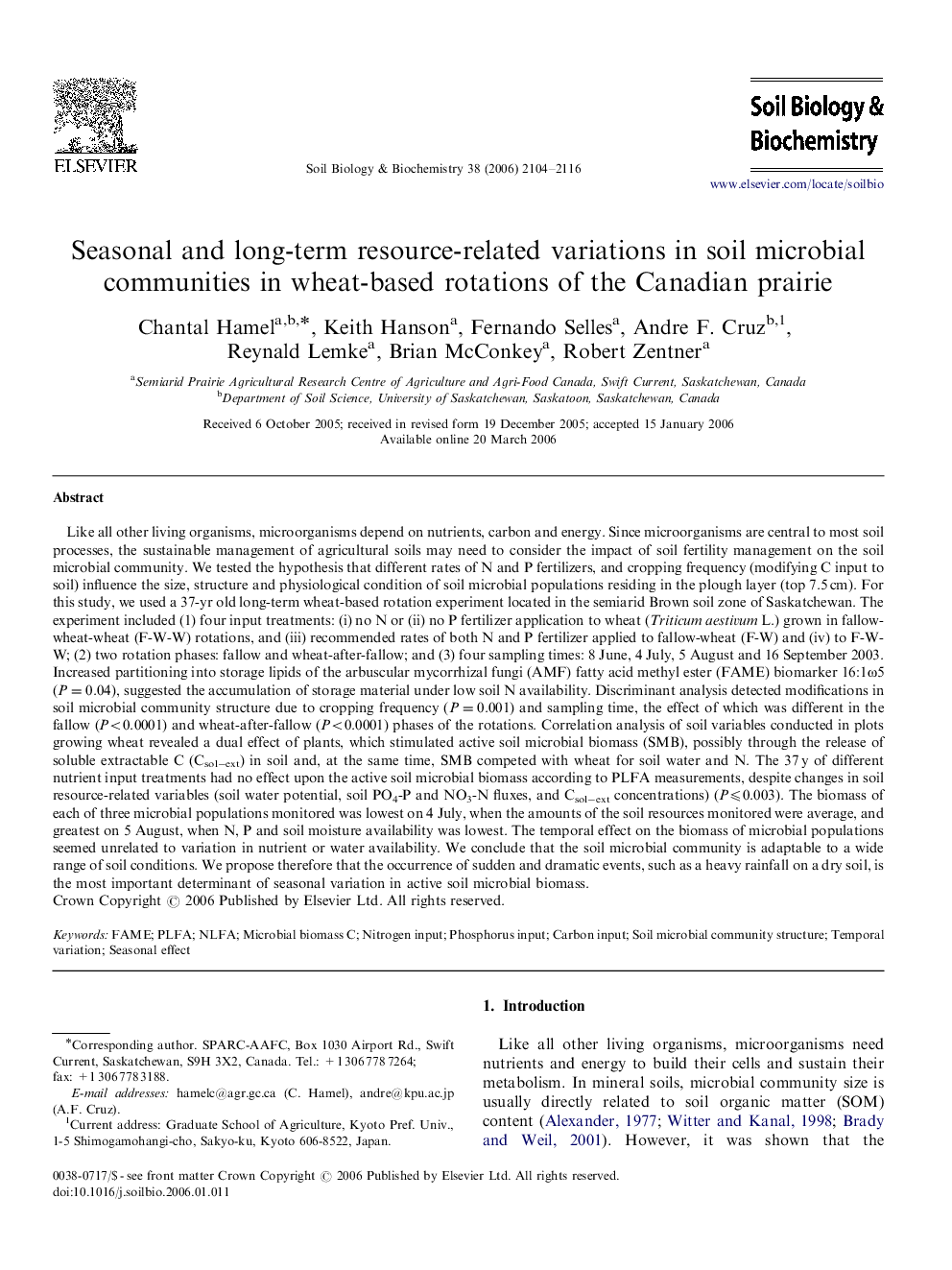| کد مقاله | کد نشریه | سال انتشار | مقاله انگلیسی | نسخه تمام متن |
|---|---|---|---|---|
| 2027176 | 1070097 | 2006 | 13 صفحه PDF | دانلود رایگان |

Like all other living organisms, microorganisms depend on nutrients, carbon and energy. Since microorganisms are central to most soil processes, the sustainable management of agricultural soils may need to consider the impact of soil fertility management on the soil microbial community. We tested the hypothesis that different rates of N and P fertilizers, and cropping frequency (modifying C input to soil) influence the size, structure and physiological condition of soil microbial populations residing in the plough layer (top 7.5 cm). For this study, we used a 37-yr old long-term wheat-based rotation experiment located in the semiarid Brown soil zone of Saskatchewan. The experiment included (1) four input treatments: (i) no N or (ii) no P fertilizer application to wheat (Triticum aestivum L.) grown in fallow-wheat-wheat (F-W-W) rotations, and (iii) recommended rates of both N and P fertilizer applied to fallow-wheat (F-W) and (iv) to F-W-W; (2) two rotation phases: fallow and wheat-after-fallow; and (3) four sampling times: 8 June, 4 July, 5 August and 16 September 2003. Increased partitioning into storage lipids of the arbuscular mycorrhizal fungi (AMF) fatty acid methyl ester (FAME) biomarker 16:1ω5 (P=0.04), suggested the accumulation of storage material under low soil N availability. Discriminant analysis detected modifications in soil microbial community structure due to cropping frequency (P=0.001) and sampling time, the effect of which was different in the fallow (P<0.0001) and wheat-after-fallow (P<0.0001) phases of the rotations. Correlation analysis of soil variables conducted in plots growing wheat revealed a dual effect of plants, which stimulated active soil microbial biomass (SMB), possibly through the release of soluble extractable C (Csol−ext) in soil and, at the same time, SMB competed with wheat for soil water and N. The 37 y of different nutrient input treatments had no effect upon the active soil microbial biomass according to PLFA measurements, despite changes in soil resource-related variables (soil water potential, soil PO4-P and NO3-N fluxes, and Csol−ext concentrations) (P⩽0.003). The biomass of each of three microbial populations monitored was lowest on 4 July, when the amounts of the soil resources monitored were average, and greatest on 5 August, when N, P and soil moisture availability was lowest. The temporal effect on the biomass of microbial populations seemed unrelated to variation in nutrient or water availability. We conclude that the soil microbial community is adaptable to a wide range of soil conditions. We propose therefore that the occurrence of sudden and dramatic events, such as a heavy rainfall on a dry soil, is the most important determinant of seasonal variation in active soil microbial biomass.
Journal: Soil Biology and Biochemistry - Volume 38, Issue 8, August 2006, Pages 2104–2116